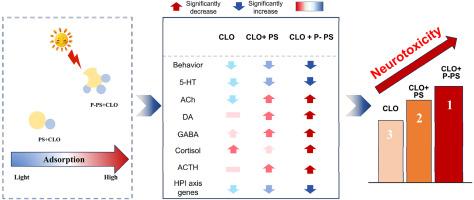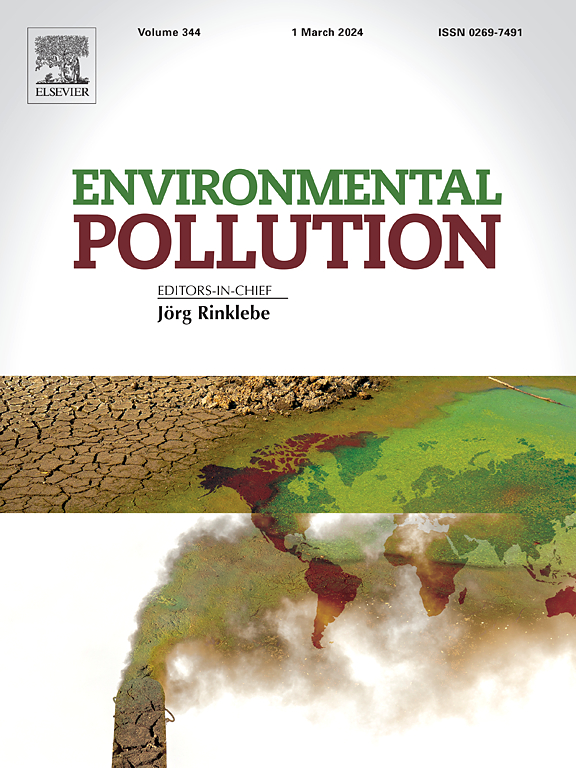Synergistic neurotoxicity of clothianidin and photoaged microplastics in zebrafish: Implications for neuroendocrine disruption
IF 7.6
2区 环境科学与生态学
Q1 ENVIRONMENTAL SCIENCES
引用次数: 0
Abstract
Microplastics (MPs), widely found in aquatic environments, pose a growing threat to environmental and biological health due to their complex interactions with pollutants and microorganisms. This study investigates the adsorption characteristics of clothianidin (CLO) on polystyrene (PS) and photoaged polystyrene (P-PS) and explores the neurotoxic effects of CLO combined with PS/P-PS in larval zebrafish (Danio rerio). Adsorption kinetics and isotherms showed that P-PS exhibited a higher adsorption capacity and faster equilibrium compared to PS, indicating the significant role of photoaging in enhancing CLO adsorption. Exposed to CLO combined with PS/P-PS resulted in reduced locomotor activity, particularly in the P-PS + CLO group, suggesting amplified neurotoxicity due to P-PS. Analysis of the hypothalamic-pituitary-interrenal (HPI) axis revealed elevated levels of adrenocorticotropic hormone (ACTH) and cortisol, along with downregulated expression of stress-related genes in co-exposed zebrafish, indicating disruption of neuroendocrine function. Neurotransmitter analysis showed significant changes in acetylcholine (ACh), dopamine (DA), serotonin (5-HT), and γ-aminobutyric acid (GABA) levels, further confirming the neurotoxic impact of co-exposure. The findings highlight the synergistic neurotoxicity of CLO and photoaged MPs, with potential implications for aquatic ecosystems. This study advances the field of environmental science by addressing critical knowledge gaps in pollutant-microplastic interactions, providing a foundation for developing targeted mitigation strategies and enhancing ecological risk management frameworks.


求助全文
约1分钟内获得全文
求助全文
来源期刊

Environmental Pollution
环境科学-环境科学
CiteScore
16.00
自引率
6.70%
发文量
2082
审稿时长
2.9 months
期刊介绍:
Environmental Pollution is an international peer-reviewed journal that publishes high-quality research papers and review articles covering all aspects of environmental pollution and its impacts on ecosystems and human health.
Subject areas include, but are not limited to:
• Sources and occurrences of pollutants that are clearly defined and measured in environmental compartments, food and food-related items, and human bodies;
• Interlinks between contaminant exposure and biological, ecological, and human health effects, including those of climate change;
• Contaminants of emerging concerns (including but not limited to antibiotic resistant microorganisms or genes, microplastics/nanoplastics, electronic wastes, light, and noise) and/or their biological, ecological, or human health effects;
• Laboratory and field studies on the remediation/mitigation of environmental pollution via new techniques and with clear links to biological, ecological, or human health effects;
• Modeling of pollution processes, patterns, or trends that is of clear environmental and/or human health interest;
• New techniques that measure and examine environmental occurrences, transport, behavior, and effects of pollutants within the environment or the laboratory, provided that they can be clearly used to address problems within regional or global environmental compartments.
 求助内容:
求助内容: 应助结果提醒方式:
应助结果提醒方式:


